As an Amazon Associate I earn from qualifying purchases.
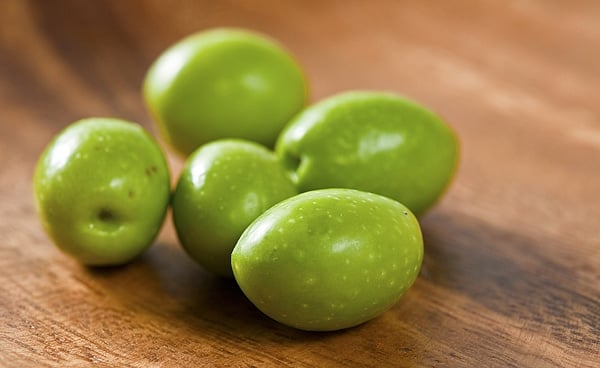
Lye. Isn’t that the stuff the Mafia uses to dissolve the bodies of those who’d made an unfortunate choice to use another waste disposal or vending machine company? Isn’t it drain cleaner, a deadly poison? So how on God’s Green Acre can lye be useful in the kitchen?
Relax. I am here to tell you that lye can be your friend, especially when it comes to curing green olives. A good lye cured olive, I have discovered, is uniquely smooth and luscious in a way that brine or water-cured olives can never be. Done right, they can be <gasp!> even better than a brine-cured olive or an oil-cured olive. Seriously.
Let me start by admitting that I was as terrified about using drain cleaner to cure olives as you are. Intellectually I knew it would work, and knew I’d eaten lye-cured olives before, as have most of us: They are those nasty black canned things also known as Lindsay olives. That knowledge, however, did not bolster my desire to do any lye curing anytime soon.
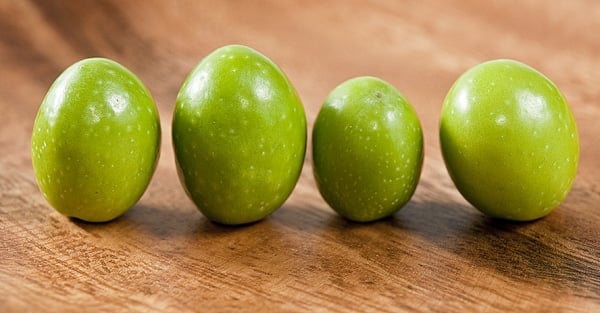
Then I did some research. I’d seen all sorts of references to how the lye cure — actually a cure in water that had percolated through wood ashes, which are a source of lye — being used “since Roman times.” Many hours of searching later, I found that the Roman agricultural writer Rutilius Taurus Aemilianus Palladius is the source of this, in his De Re Rustica, written in the 300s.
“Mix together a setier of passum, two handfuls of well-sifted cinders, a trickle of old wine and some cypress leaves. Pile all the olives in this mixture, saturate them with this paste in garnishing them with several layers, until you see it reach the edges of the containers.”
Passum is freshly extracted grape juice, so the lye in the ash-water interacting with this would make an interesting brew. There would be so much sugar going on in there that you could get both a lye cure and fermentation going at the same time. Freaky. Since then the Spanish have been masters of the lye cure. Most Spanish table olives are cured at least in part with lye, but their process is far different than that used in to make the hideous Lindsay olive. I am modifying a method I found in an agricultural book written in 1817.
Incidentally, other popular modern olives that use a lye cure include the French lucques, Italian cerignola and Spanish manzanilla.
First thing you need to know about curing olives with lye is that you must use fresh green olives. Not black ones, not half-ripe ones. The lye process softens the meat of the olive, so you want it as firm as possible. When you are picking your olives, watch out for olive fly. The larva of this nasty little bug burrows into an olive and eats it from within. Thankfully infested olives are easy to spot: They will ripen faster than healthy olives, and there is a tell-tale scar on the olive that looks like this:

Toss that olive. While the worm is not poisonous, I prefer my olives sans extra protein, thank you.
What sort of lye do you use? The traditional brand to use is the classic Red Devil Lye, which is an old brand of drain cleaner. But all the science I’ve seen says anything that is 100 percent sodium hydroxide works, so scan your drain cleaner well to make sure it is nothing but lye — Drano used to be this way, but apparently has additives now. Don’t use it. Buy “food grade” lye if you want to, but after much research, I can find no hard evidence that there is any difference between so-called “food grade” lye and non-food grade lye. I’ve used both.
Isn’t lye a deadly poison? Sorta. Sodium hydroxide is one of the nastiest bases we know of; a base is the opposite of an acid. On the PH scale, distilled water is the median, at 7. Your stomach acid’s PH is about 1 1/2 — enough to burn a hole through a rug. Lye’s PH is 13.
Bottom line: Raw, pure lye will burn the hell out of you, but it is not a systemic poison. That means that even if you eat an olive that still has a lot of lye in it — as I did — all you will taste is a nasty soapy flavor. If you eat a bunch of them, the alkaline PH in the olives will counteract your stomach acid and it might give you indigestion. That’s all, and that’s a worst-case scenario. That said, you need to be careful at that one moment you are moving raw, pure lye from the container to the crock you are curing into.

LYE CURING STEP BY STEP
Follow these instructions and you will be fine:
- Wear glasses if you have them. Wear long sleeves and pants and closed shoes. You will probably not get lye on you, but better to be safe.
- Pour 1 gallon of cold — not tepid, not hot, but cold — water into a stoneware crock, a glass container, a stainless steel pot, or a food-grade plastic pail. Under no circumstances should you use aluminum, which will react with the lye and make your olives poisonous.
- Using a measuring device that is not aluminum, add 3 tablespoons of lye to the water. Always add lye to water, not water to lye. A splash of unmixed lye can burn you. Stir well with a wooden spoon.
You’re done. You use cold water because the reaction between lye and water generates heat, and the hotter the lye-water solution, the softer the olives will become. Now that it is mixed, the lye solution can’t hurt you, so go ahead and add your olives.
Stir them in with that wooden spoon and put something over all the olives so they do not float. This is vital. Olives exposed to air while curing turn black. Don’t worry, they will absorb the water and sink in a few hours, but to start you need to submerge them.
Let this sit at room temperature for 12 hours. The alkaline solution will be seeping into the olives, breaking the bonds of the bitter oleuropein molecules, which then exit the olive and go into the water. After 12 hours, pour off the solution into the sink. It should be pretty dark in color.
Quickly resubmerge your olives in cold water. You want to minimize the exposure to air. You now have cured olives. I know, I know, a lot of recipes say to repeat the lye process another time — sometimes three more times — but that will destroy a lot of flavor; there are a ton of water-soluble flavor compounds in an olive that the lye solution washes away. Trust me. Your olives, unless they are gigantic, will not be overly bitter even after just a light, 12-hour lye soak.
Now you need to cleanse your olives. They will have a fair bit of lye solution in them now. Keep changing the water 2 to 4 times a day for 3 to 6 days, depending on the size of the olives. After 2 days, taste one: It should be a little soapy, but not too bitter. It’ll be bland, and a little soft. Once the water runs clear you should lose that soapy taste.
Time to brine. If you have large olives, make a brine of 3/4 cup salt to 1 gallon of water. And use good salt if you can. You will taste the difference. Kosher salt is OK, but ideally use a quality salt like Trapani, which is from Sicily. It’s not that expensive, but it is worlds better than regular salt.
Let the olives brine in this for 1 week. Keep them submerged, or you will get darkening. After a while they will sink. After 1 week, pour off the brine and make a new one, only this time, use 1 cup of salt per gallon.
Now you can play. The traditional Spanish cure would add some vinegar to the mix, as well as bay leaf and other spices. I’ve played with adding a touch of smoked salt, chiles, black pepper, coriander, mustard seed, garlic — think Mediterranean flavors.
But before you do this, taste your freshly brined olives. It will be a revelation. They will remain beautifully green, unlike brined olives. Salty, olive-y and very, very buttery. This is the Lay’s Potato Chips of olives. I dare you to eat just one.


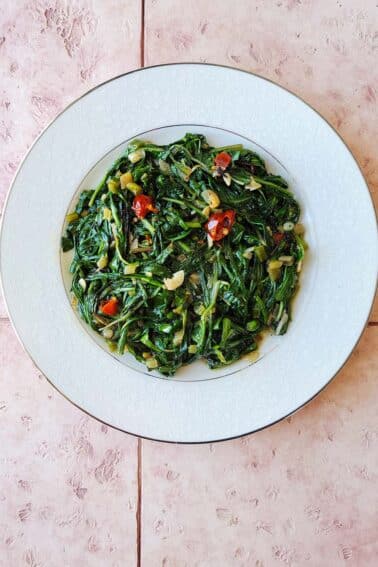
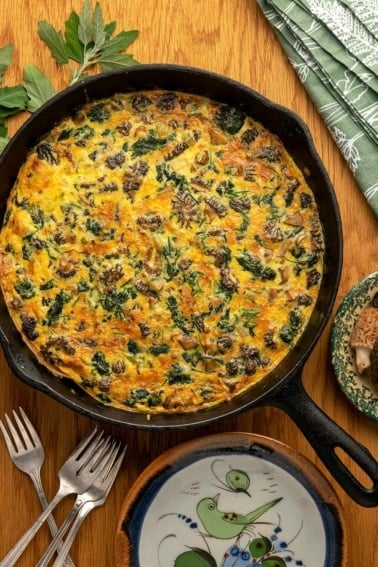
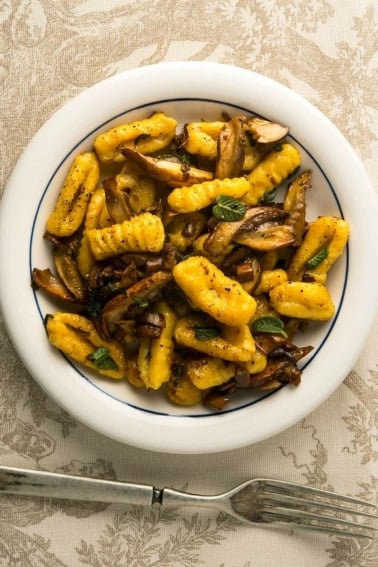
Thanks for the info!! How can you tell the difference between a ripe green olive and an unripe one?
Marty: Mostly it’s a time thing. Here in California, the time is late September to early October. They might look OK in early September, and you can still work with them, but they will be even more bitter than normal.
I am in the Western Cape South Africa . I tried the lye method two years ago , and after putting in brine , somehow forgot about this bucket full of olives . Well , I ” discovered ” it again a couple of weeks ago , and it has turned into the best best , smooth tasting green olives I have ever tasted . Started harvesting olives yesterday , and have decided to make a large quantity using the lye method . Enjoy !
Hi Robyn, Hank,
I’m in Australia, so this is the olive season now. I used about a tablespoon of NaOH/lye (Diggers Caustic Soda 98%) to a litre of water. This seemed to work OK, and I don’t think the exact ratio is that critical.
I found that 12 hours was not long enough and after checking the cure several times I ended up with about 48 hours. However the room was fairly cold, say 15C or 60F, and that does slow it down. Also the olives are large and maybe not so ripe. I sliced open an olive every 8 hours to check on the penetration of the cure.
Andy
Hank….Hi from New Zealand…..thanks so much for this blog post. We have an olive tree growing outside the gate, and so we picked a heap of olives and tried your lye cure. I’m also a soapmaker, so had NaOH, which made it easier. The olives are great so far – they are in the first brine stage. I’m looking forward to the flavouring part. Wish the olives were bigger – they’re quite small. I think I read somewhere that you can add about 1 cup of vinegar to 5 cups of brine for the final stage so I’ll try that, but any feedback you or your readers have on good vinegar/brine ratios would be a huge help… Thanks again for this post – really found it helpful!
By gallon do you mean a US gallon which is 3.78 liters or UK gallon which is 4.54 liters?
Robyn: I live in the United States.
This is awesome. I’m sending the link to my hubby!
I found a goldmine worth of huge ripe black olives pounds and pounds I picked. Yet I noticed a worm crawl out of them and after cutting them opened found about 70% of them had worms. My question is can I cut out just the non infested pieces and cure them? Also many of them have pinpricks where the eggs have been laid but haven’t hatched(just a little discolored where the wholes are) – are those ones Okay?
Also I’m using the Dry salt cure method. Will the Salt kill these parasites????
Will doing a 3 min flash boil kill before I try to do a brine or water cure? Please give me some idea because I hate to let this source of olives be unusable.
Perhaps maybe I should pick earlier in the season while they are still hard and green? Any ideas please let us know.
Throw them out. They are infested. Sorry.
Growing up in Newcastle/Loomis area of northern California where there used to be a lot of old olive groves, a favorite annual treat was the big jar of homemade lye-cured olives a neighbor used to give us every year. I now live in Greece, home of the famous Kalamata, but I’ve never forgotten the taste of those olives from years ago. My in-laws think my memory must be failing. Olives? And LYE? We’re going to be doing a water and citric acid cure this year, but I’d really like to have a go at trying your recipe. The only problem is finding sodium hydroxide…I’ll keep searching. In the meantime, thanks for continuing to inform, entertain, and inspire. Great blog.
Lye was hard to find thank god my grandma still has some it’s not sold in stores anymore
Hank You ROCK!! I live in Tucson, AZ and last year I harvested olives cured using water and brine. Took 6 months before they were edible. Just put 13 lbs in cure and can’t wait to mix up some brine. I brew my own vinegar and have made several batches of flavored vin which I use with salt, water and herbs to make different flavored olives. Suggestion to others….soak herbs, onions, hot peppers and spices in plain vinegar first to flavor. Strain out add to brine. The addition of acid has allowed for regular shelf storage. I have also salt dried my olives and then rehydrated them in brine later. Thanks for all the great tips all!
Hi Hank, my olives are wonderful, but like Courtney I am wondering what to do next? I have 25lbs of olives cured in the second brine. Can I leave them like that until I use them like say till Dec. out of the fridge or do I need to can them, to preserve them? I now have them in 2 half full 5 gal containers that will not fit in my fridge.
I generally keep them in a cold place. If you have a basement, or somewhere colder than room temperature, they’ll be fine for months. They get softer the warmer they are kept, so either eat faster or chill ’em down.
Hi! I’ve tried several methods of olive curing and was always leery of using lye. This recipe was wonderful and easy! I love how quickly they pick up the flavors of whatever you put in the jar. I used lemon slices and garlic and they are excellent paired with feta cheese and a lemon olive oil.
I’m wondering about pitting them–has anyone had success with this? I’m considering buying a simple, cheap pitter and seeing how that goes…
Hello,
I’ve bought some olives in brine. How do I get rid of the horrible briny taste from them? Having read your article I am thinking of curing my own next time.
All the best
Libby
Caution: The fellow (Stuart) who said that 500 grams of lye won’t hurt you is, sorry to say, a bit off his rocker. I’m flabbergasted that he would encourage people to handle lye with bare hands! You don’t need to be hypersensitive to lye for it to dissolve your skin! Ignore his comments and follow the precautions given in the article. If Stuart was able to measure out a fistful of lye with his hands, without damage, it was only because his hands were completely dry, and he quickly washed off any of the powder that remained on his skin. Just because his recklessness didn’t cause him harm does not mean you’ll be so lucky. Most likely you will not walk away unscathed.
Dont worry about how salty your olives taste after 2nd treatment, better too much than not enough. I find it easy to soak the olives needed the day before. You can remove nearly all the salt if you soak them over 2 days, personally I find overnight is OK.
After soaking simply roll them dry and add your oils herbs etc. These will keep in good condition in the fridge for up to a week, if they last that long?
Greetings from Australia.
Hi Hank- we followed your recipe and love how the olives have turned out. Now wondering how to best pack them up to give as gifts. Is it best to jar using a pressure canner or is there another easier, while still safe method? What does everyone do with their lbs and lbs of olives?
Thanks so much,
Kris & Courtney
Todd: Yes, you can reduce the salt in the second brine. in the seasoning brine I go 1/4 cup Morton’s kosher salt to 1 quart water. Bay leaves, mustard seeds and black peppercorns. Maybe a chile or two.
Bryan, I took a zip-lock bag, filled it with cold water, and laid it on top of the olives. it keeps them well submerged, and is dirt cheap.
Hank, tried a salt water brine last year with (at best) marginal results. Took the plunge and tried your Lye method this year. Simply amazing! Thanks so very much for laying it out oh-so-simply.
Two questions for you (or anyone else here):
1) My wife finds them too salty. After the second (first?) salt brine, can I reduce the amount of salt for storage?
2) Can you give me an idea of just what you put in the seasoning brine? How much salt to water, amounts of spices, etc.? I’d hate to screw them up now…
Awesome post, Hank!
I’m sourcing my ingredients as we speak.
I’m also trying to figure out what non-reactive item to use to submerge the olives at the start of the lye soak.
Sure, any glass, food-grade plastic, or stainless etc item will do, but have you found the lye at this proportion to etch or damage the items you use? Or have you ever used parchment paper for this step?
Thanks in advance.